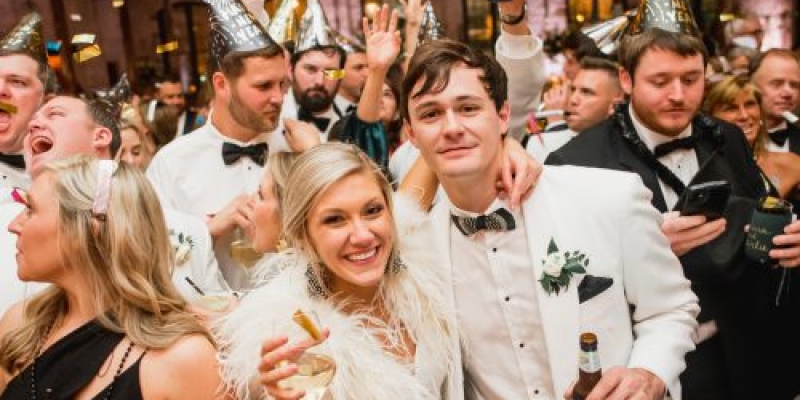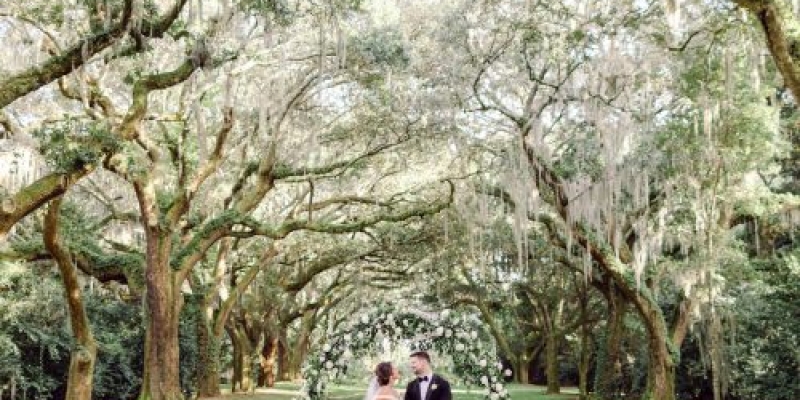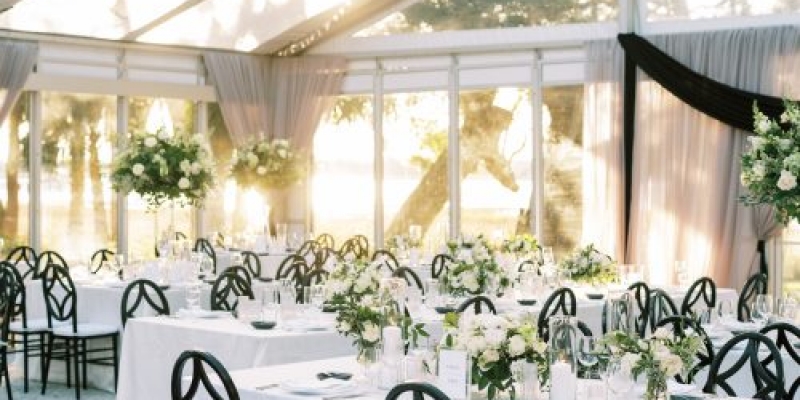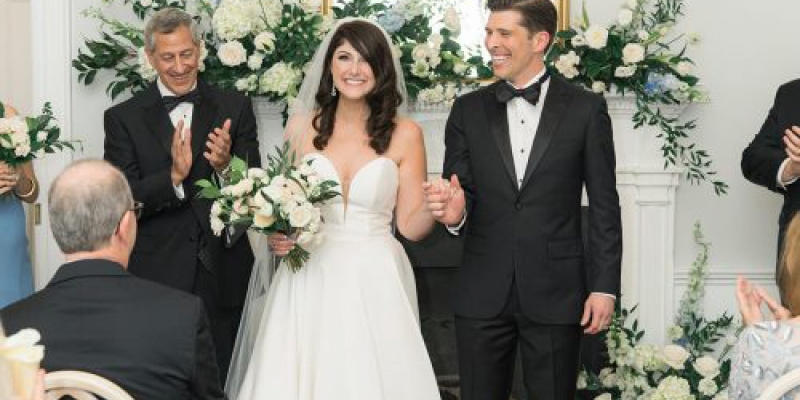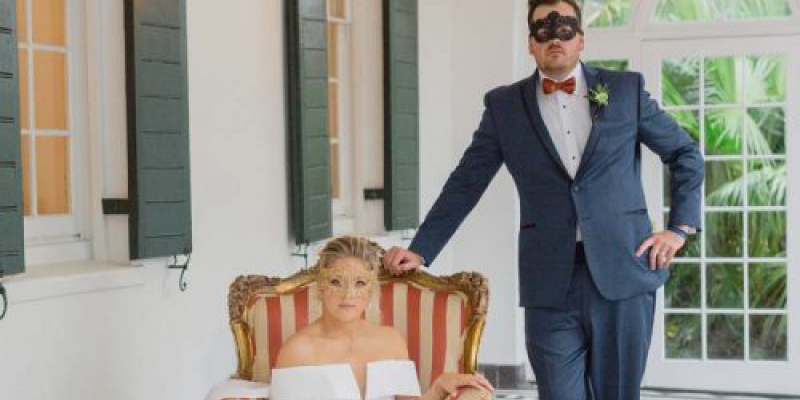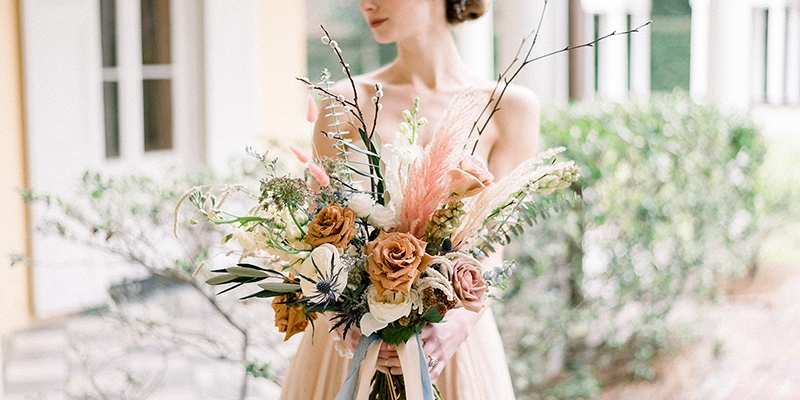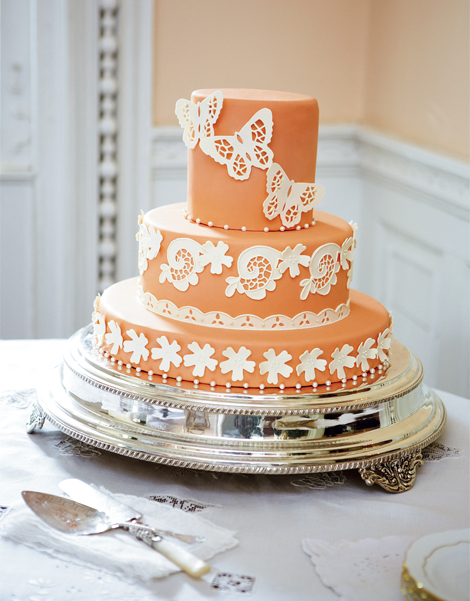 |
Linen
Details:
Embroidered butterflies and lace patterns from an 1870s Charleston wedding cake tablecloth informed this cake covered with vanilla almond buttercream and pale coral vanilla fondant, filled with Manjari chocolate ganache and toffee bits, then decorated with hand-cut and piped gumpaste details.
Serves: 116 ($814)
Designer: Ashley Bakery
|
|
 |
|
Linen History Lesson
Throughout the Western hemisphere during the 1850s to the 1880s, sentimentality ruled. Nowhere was romance more pronounced than in wedding traditions. Linens, part of a bride’s trousseau, were lovingly hand-stitched and stood as a testament to women’s drawing room talents. The tablecloth seen here was created in 1870 by a Charleston family member for the wedding cake table and is rich with symbolism. Butterflies represent the new life the newly wed couple embarked upon; bridal lace primly trims the border; and the stark white speaks of purity. Wedding cakes were created to mimic the designs of linens like these, and the tablecloths were passed down from generation to generation.
|
|
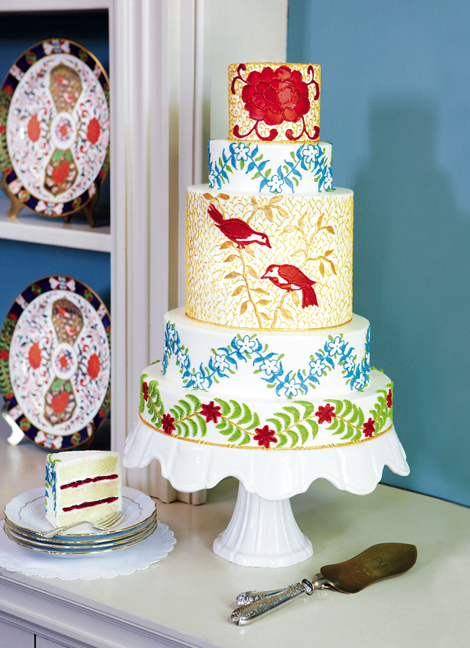 |
China
Details:
Peonies, vines, and lovebirds in their palette of gold, crimson, blue, and fern green on this cake were taken from a pair of 1800 Derby plates. The butter cake is filled with fresh raspberries, Italian buttercream, and creme de cocoa, then covered in Italian buttercream and decorated with piped designs.
Serves: 135 ($975)
Designer: Wedding Cakes by Jim Smeal
|
|
 |
|
China History Lesson
For centuries, registry items like china have testified to a couple’s standing: the finer the goods, the finer their prospects. And in Charleston during colonial and plantation times, the difficulty of importing such goods gave china especially great merit. The plates below and at far left were created for a Charleston bride by her London-based uncle in 1800 and are rich with meaning. Says Dawn Evers-Corley, “The lock in the center indicates two people ‘locked’ in love; the birds symbolize happiness; the seed pods, vines, and organic motifs represent posterity and the continuance of life; and the colors speak of vibrancy and vitality.” The finest of their day, these Derby plates were intended for the couple to use for wedding cake and display thereafter.
|
|
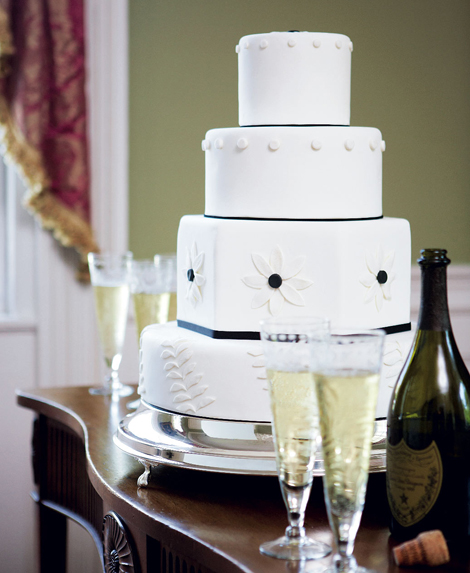 |
Crystal
Details:
Daisies and fern-like fronds etched in a set of Edwardian era champagne flutes
inspired this cake’s look. The champagne-infused white cake is filled with fluffy black poppyseeded Chantilly cream, iced in buttercream, covered in snow white fondant, and dressed with sugared white fondant flowers and greens, and whisper-thin black ribbon.
Serves: 175 ($1,182)
Designer: Elaine’s Events
|
|
 |
|
Crystal History Lesson
Lore has it that the drinking word “toast” came from the tradition of dropping a square of bread in the bottom of wine glasses to collect sediments. When one finished their glass, all that remained was the bread or the toast. Oddly enough, etiquette says bride and grooms are not to raise their glasses, given they are being toasted by others. Glasses like the champagne flutes (circa 1901) in the foreground at right are rare finds today, as antique crystal is so fragile large sets rarely survive the years. These did and passed through three generations, sitting on a silver tray in the window of a King Street home. The owners say they were gifted into the family as a wedding present in 1901. This shape was first popular in the 1870s and stayed en vogue until the 1930s.
|
|
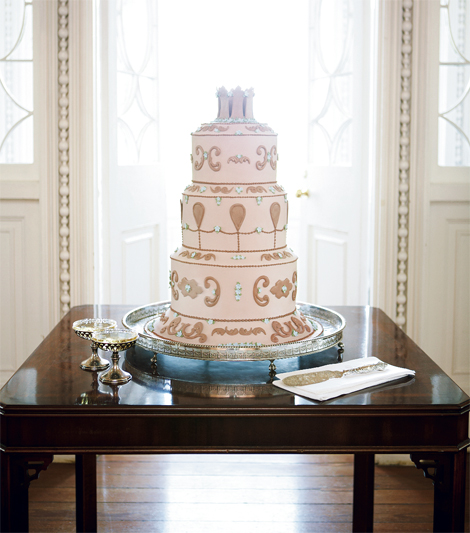 |
Silver
Details:
Curlicues, swirls, and scrollwork lifted from an 1830s cake “saw” formed the basis of this cake’s decorative elements. The rich chocolate pound cake is filled with white chocolate mousse and fresh raspberries covered in pale taupe fondant and decorated with a run sugar coronet, more than 100 run sugar appliqués, and 200 gumpaste flowers.
Serves: 150 ($3,000)
Designer: Jean-Paul Creative Cakes
|
|
 |
|
Silver History Lesson
During the Victorian period, wedding cakes were typically “dense, dry fruit cakes” says Dawn. Thus, serrated cake “saws” like this one from a local family were used to cut pieces for guests. Made of coin silver—a mix of 90 percent silver and 10 percent copper—the blade and handle of the 1830s piece are hand-engraved in swirls and flourishes that were popular at the time. Highly collectible, this piece (initially a wedding gift to a Charleston bride) has been passed down in the same family for seven generations.
|









